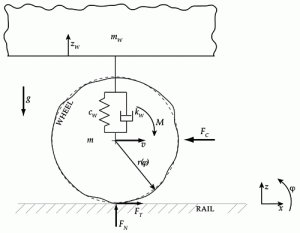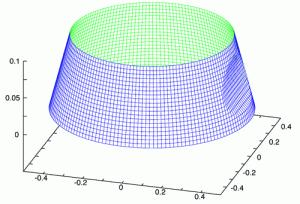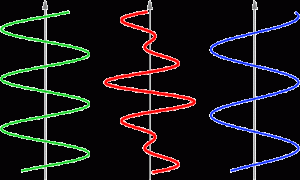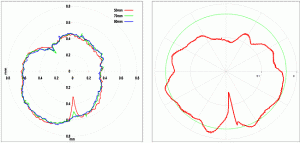Identifying Causes of Out-of-Round Wheels: Measuring Field Experience Against Simulations
By Bernhard Barkow and Paul Mittermayr • October, 2008
The interface between the wheel and rail represents the central link in railway dynamics. Imperfections, such as out-of-round wheels, have a significant effect on vehicle and track maintenance costs, and on safety and passenger comfort, as well (1).
Much research has been done on the benefits of optimizing life cycle costs in recent years (2). But because of the complexity of the issues, comprehensive studies on out-of-round wheels are scarce. The research presented in this article is based on the use of a new simulation tool that models rolling motion under realistic operating conditions, i.e., the model considers out-of-roundness and wear, among other factors. The simulation results are then verified and calibrated, using real-world measurement data from stationary facilities, in order to predict the system’s behavior and possible improvements.
Simulation of the System: the Physical Model
The most important step in modeling a system is to simplify the physical attributes as much as possible. Simplifying a very complex system helps to keep the number and type of errors manageable. The simulation process starts with a simple, one-dimensional model, which consists of a rolling disc on a flat, elastic surface with a coupled load (see Figure 1) (3). This model is then extended to three dimensions by discretizing the wheel surface and implementing detailed contact conditions (see Figure 2). While this is very simplified compared to a vehicle on track, it represents the effects of actual operating conditions quite well.
The second important part to be treated is the wear process, itself. Since it is difficult to accurately simulate the physical processes at the micro-structural level (4), a more phenomenological model was chosen. The Archard wear model proved to be simple but versatile enough, where the wear rate is proportional to the friction in the contact area, with an additional distinction between mild and heavy wear.
Simulating Long-Term Behavior
One of the main challenges of modeling is that wear is a long-term phenomenon, typically occurring over 100,000 kilometers, or more. Wheel/rail contact, on the other hand, occurs rapidly and dynamically, requiring a temporal resolution in the range of milliseconds to reliably compute the forces as they occur.
The different scales make it difficult to treat the system numerically. Unavoidable errors that occur during integration compound quickly, rendering the numerical results useless. To combat this, the system is split into two independent parts that are coupled via a long-term feedback loop. The short-term dynamics are computed precisely under constant parameters (this includes the wheel shape). The forces computed there are used to estimate the wear — the long-term dynamics — which is amplified and fed back into the short-term system dynamics in the form of a modified wheel shape.
This, again, requires the use of a more phenomenological wear model instead of treating the wear processes at the microstructural level, which would require significant cost and computation time — much too long for these processes to show an effect.
Sources of Friction
The type of wear that contributes to out-of-roundness in wheels is caused by friction between wheel and rail, rather than by discontinuous effects such as single impacts or emergency braking.
Since the free wave-like motion of a double cone on two rails (which a wheelset is a good approximation of) is essentially friction-free, other sources of friction must be considered. A good source of friction is found in the bogie. Depending on its stiffness, the bogie forces a modified wavelength on the wheelset’s motion, resulting in a periodic slip and, consequently, periodic friction (see Figure 3). Even if all other components behave ideally, the bogie ensures that there will be wear.
Results and Comparison
A large part of the deformations seen in railway operation are polygonizations and flats. Naturally, these effects are more pronounced in smaller-diameter wheels like those used for combined traffic, such as the “Rolling Highway,” which is made up of specialized flatcars with small wheel diameters (380/360/335 mm) that are used to transport trucks by rail on some European railways (see opening photo) (5). The greater number of revolutions over the same distance (compared to a larger wheel), and the higher load per wheel, make this type of car ideal for this study. (Also, most of the available data originated from measurements of this type of combined traffic vehicles.)
Wear patterns that evolved for different bogie stiffness are shown in Figure 4. The behavior is highly nonlinear; a small change in the parameters can result in a very dissimilar wear pattern.
Due to the periodicity of the friction, as described above, along with the periodic motion itself, patterns evolve along the wheel surface. Depending on the choice of parameters, the patterns can also be extinguished again. This indicates that it is beneficial to introduce irregularities to break the periodic motion in order to prevent wear patterns from becoming too pronounced.
Another type of wear pattern, tread surface and circumferential cross section, is shown in Figure 5. This figure shows how an 8-mm flat spot spreads through polygonization over the entire surface of a wheel.
As a final example, the direct comparison between a simulated wheel (with an initial flat) and a measured wheel (see Figure 6) shows good correlation between the numerical results and real life (although, quantitatively, they do not agree completely).
Overall, the simulations in this study brought greater insight into the underlying mechanisms and causes of out-of-roundness. Together with field measurements they provided a promising tool to better predict wheels’ lifecycles. The study and results also call attention, however, to the need for regularly scheduled, detailed measurements in order to predict wheel life and lifecycle costs. Frequent, detailed measurement also enables early detection of problems — an important factor in reducing defect-related costs, especially as heavier axle loads and higher speeds generate greater stresses on cars and track.
![]()
Acknowledgement
The research project “SIMOOR—Simulation of Out-Of-Roundness of Railway Wheels” was supported within the program “ISB – Innovatives System Bahn” by the Austrian Research Promotion Agency (FFG) under project # 811991.
References
(1) Frischmuth, K., “Rail-wheel contact, dynamical simulation and damage,” W. Kosinski, R. de Boer, and D. Sevcovic, editors, Problems of Environmental and Damage Mechanics, Warszawa, 1997. IPPT PAN.
(2) Nielsen, J., and Johansson, A., “Out-of-round railway wheels: a literature survey,” Proceedings of the Institution of Mechanical Engineers, Part F: Journal of Rail and Rapid Transit, volume 214, pp 79 – 91. Professional Engineering Publishing, 2000.
(3) Frischmuth, K., and Langemann, D., “Distributed numerical calculations of wear in the wheel-rail contact,” K. Popp and W. Schielen, editors, System Dynamics and Long-Term Behavior of Railway Vehicles, Track and Subgrade, volume 6 of Lecture Notes in Applied Mechanics, pp 85 – 100. Springer, 2003.
(4) Olofsson, U., and Lewis, R., Tribology of the Wheel–Rail Contact, Chapter 5, pp 121 – 141. CRC Press / Taylor and Francis, Boca Raton, FL, 2006.
(5) Wikipedia. “Rolling highway,” July 2008 (cited 2008-08-28), http://en.wikipedia.org/wiki/Rolling_highway.
Bernhard Barkow, EURAIL-ING, Research & Development, Consultant was responsible for the “SIMOOR—Simulation of Out-Of-Roundness of Railway Wheels” research project at BAMM, 2006 – 2008.
Paul Mittermayr, EURAIL-ING, is Managing Director of BAMM, Research & Development, Scientific Consultant, Senior Lecturer (Vehicle dynamics) at UT Vienna, and primary research partner of Wiener Linien and Austrian Federal Railways (OBB) in the fields of contact geometry and profile optimization.






